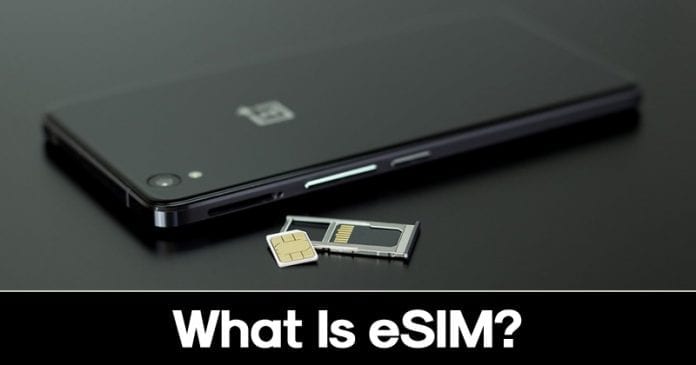eSIM is an entirely new technology which will save you from getting a new SIM card every time you port your number to the different carrier. Even, GSMA has started generalizing the use of eSIM (embedded Subscriber Identity Module).
What Is eSIM & How It Will Make Our Lives Easier?
Well, in the past few years we have heard a lot about eSIM (embedded SIM). It all started with the launch of Google Pixel 2 and Pixel 2 XL when the search giant Google talked about the eSIM Support. So, what’s the eSIM technology and how it works?
You might have already heard about the rumor that smartphones will no longer need SIM cards to connect with cellular networks in the future. So, to some extent, that foresight is about to be true. The eSIM technology could save you from getting a new SIM card every time you move to a different carrier.
The technology might look complicated, but this is something remarkable. So, let’s explore more about the new eSIM and how it works.
Also Read: What Is The Difference Between Deep Web, Dark Web & Darknet?
What is eSIM?
eSIM is an entirely new technology which will save you from getting a new SIM card every time you port your number to the different carrier. Even, GSMA has started generalizing the use of eSIM (embedded Subscriber Identity Module). The devices or smartphones which comes with eSIM support will feature an internal SIM card that will be attached to the motherboard.
The best thing about eSIM is that the internal SIM card that’s attached to the motherboard can connect to the networks of multiple carriers. This technology eliminates the need for a Physical SIM card. However, the concept of eSIM is not new, GSMA had been testing the abilities of the software-based SIM cards from the year 2010.
eSIM features the same electrical interface that you will find on micro, nano, or regular cards. The first version of the eSIM specs was limited to Smartwatches, fitness trackers, tablets. However, the second version of eSIM brought support for almost all consumer device, including phones.
Also Read: What Is System Volume Information Folder In Windows? What it Does?
What’s new with eSIM?
As we have mentioned above, the second version of eSIM brought support for smartphones. The phone with eSIM support can store multiple carrier profiles at once. However, you can only use one at a time, and the Carriers needs to use Remote SIM provisioning to configure the embedded SIM over the air.
Another best thing about eSIM is that the devices can share the same number and internet plans. For example, Apple Watch Series 3 has the eSIM support, and it can use the same mobile number as your iPhone. Not only number, but you can also take advantage of the cellular network if you are willing to pay some extra fee.
So, if eSIM could be very beneficial for the carriers, manufacturers, and customers because it will reduce the trouble of maintaining multiple SIM cards. Not only that, but the same technology could help carriers to modify the data on eSIM according to their need.
Also Read: What is a Distributed Denial-of-Service (DDoS) attack? How does it work?
The embedded SIM can benefit various electronic devices like smartphones, health devices, etc. So, what do you think about eSIM? Share your opinion in the comment box.



